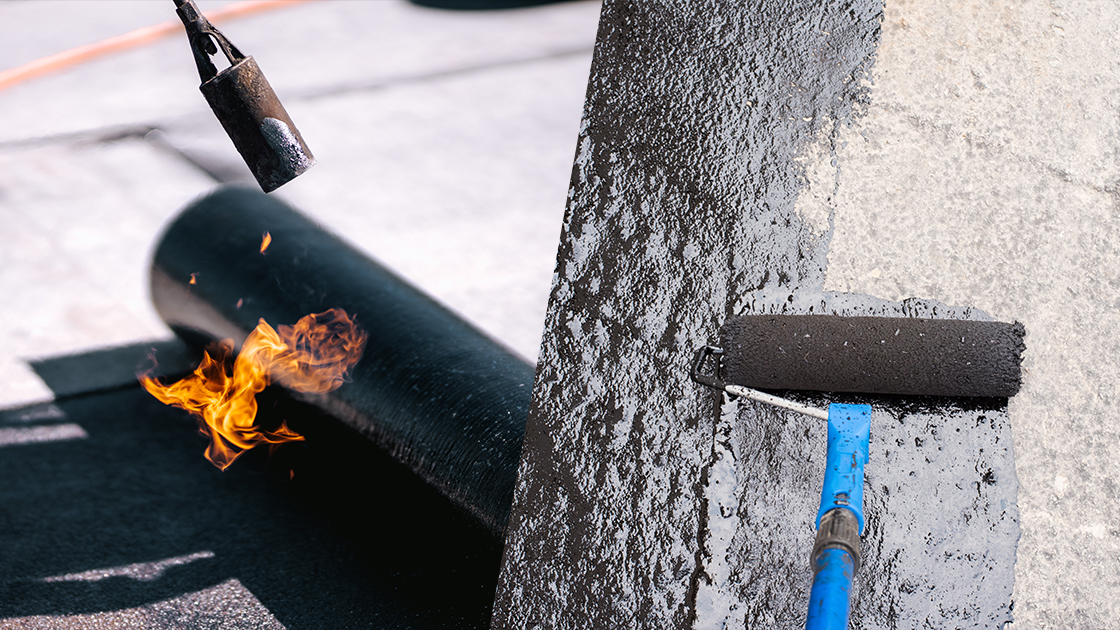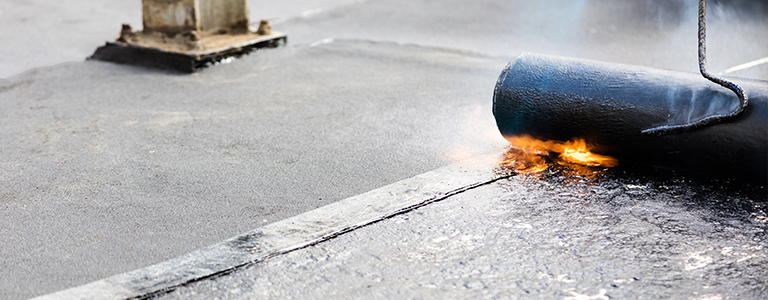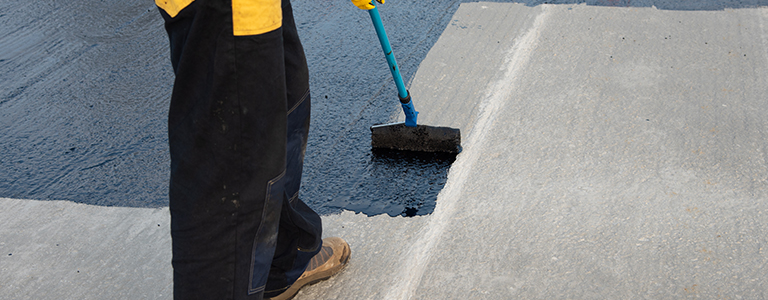
To torch on the membrane or liquid apply? That is the question. We’re here to break down the difference between torch on membrane waterproofing and liquid membrane and help you decide what might be the best solution for you.
Torch on membrane
As the name suggests, torch on membrane is applied to the surface using a torch to create a waterproof barrier. It is made primarily of bitumen, a crude oil-based hydrocarbon, and is then modified with asphalt. This mix is then reinforced with a layer of polyester to give it structural integrity and optimum longevity.
When installed correctly, this method can last between 15 to 20 years, making it a cost-effective waterproofing solution for any home or business owner.
Many professionals may opt for a torch on membrane option as it’s considered a stronger, sturdier membrane, specifically designed to safeguard surfaces from water.
What’s torch on membrane best for?
Torch on membrane can be custom fitted to various spaces and it is ideal for low-angled roofs or concrete rooftops that tend to pool water. It can also be used for the inside of planter boxes, gutters, flower boxes and water retaining structures.
How is it installed?
There are two types of torch on membrane, each with its pros and cons:
- APP – This tends to be easily heated with a torch, allowing for quick installation. Although, this option is less flexible and hardwearing.
- SBS – Unlike APP, SBS has greater flexibility and a longer lifespan, but does take longer to heat, and therefore, to install.
Liquid membrane
Liquid membrane waterproofing is effective in protecting many structures. It provides optimised performance and, equally as important, longevity.
Liquid applied membrane cures to form one solid membrane, which offers a seamless finish. It also can adapt to temperature changes with the ability to expand and contract and adjust to minor structural movements.
What is liquid membrane best for?
Liquid membrane waterproofing can be applied everywhere that sheet membranes can and more. As it has no sheets or joints, it’s great because it offers extreme flexibility, making it ideal for areas that are complicated or detailed. This includes:
- Rooftops
- Retaining walls
- Podiums
- Balconies
- Planter boxes
- Water features
- Detention tanks
- Wet areas
- Decorative façade coatings
This membrane waterproofing option is great for seamlessly filling in gaps, cracks and voids.
How is it installed?
The simple, safe and efficient liquid membrane application method makes it a great choice for most areas.
It’s applied via spray or roller, and once dry forms a complete and continuous watertight seal with good flexibility, UV-resistance and breathability.
If you’re looking for a trusted and reliable waterproofing in Sydney, trust Titan Waterproofing to help you. Whatever you decide you need, we have the right solution to suit you. Visit our website to learn more about our various waterproofing solutions.


